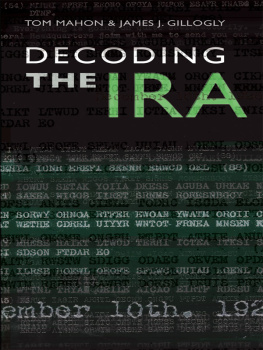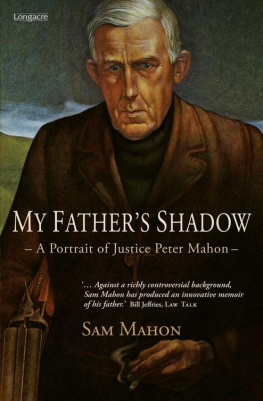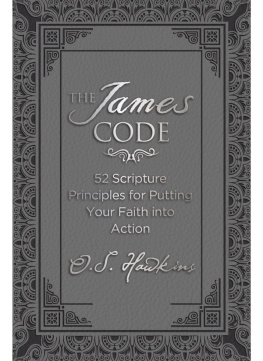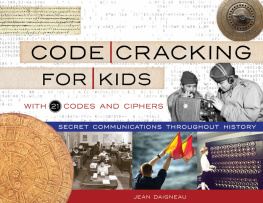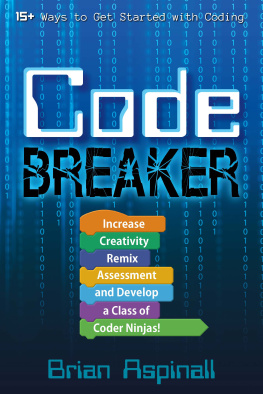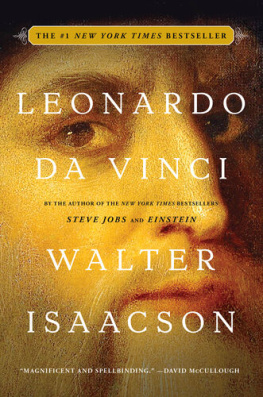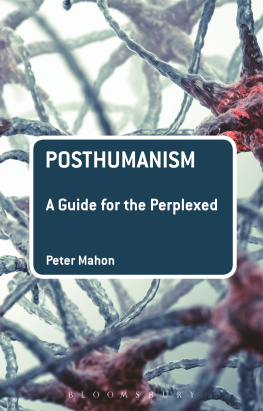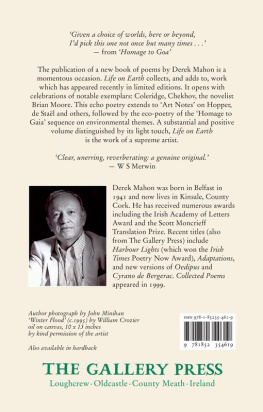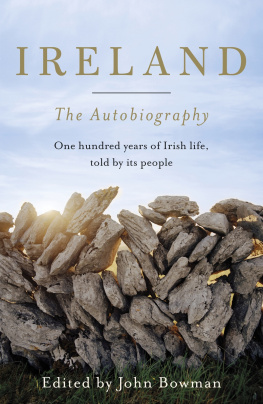Acknowledgements
Acknowledgements
There were two aspects of this project that made it most memorable: one was the documents themselves, which revealed a world of intrigue reminiscent of a John le Carre spy novel. The other was the many wonderful and interesting people I met during the last four years.
It has been a delight working with James Gillogly whose expertise fascinated me at every stage of this work. Im very grateful for Jim and his wife Marriettas sage advice and hospitality. Marriettas editing and review of the manuscript was of enormous value.
The encrypted documents came from the Moss Twomey papers at University College Dublin Archives. Im extremely grateful to Seamus Helferty, the principal archivist, for his tremendous assistance, encouragement and patience in answering my many queries. Im also grateful to the ever helpful archivists: Lisa Collins, Kate Manning and Orna Somerville.
Brian Hanley was most generous of his time and provided me with much information including an unpublished paper on the IRA in America. Emmet OConnor was also of great help and sent me relevant portions of the MI5 file of General Walter Krivitsky. Tim Pat Coogan shared his insights on the IRA and was unfailingly hospitable. Dr Garret FitzGerald was most gracious to give of his time and to respond to my queries.
In Dublin Im indebted to the advice and assistance of Peter OLeary, Des Mahon and Joe Allen. Thanks to Mike and Caroline Allen, Francis Devine, Sean OMahony and Michael MacEvilly. In Cork Id like to thank Deirdre and Maeve Crofts. With fond memories of Dominic Crofts and Helen ODonovan. Id like to take this opportunity to also thank Tony Duggan who went out of his way to provide me with tremendous help on a still unfinished research project. Meda Ryan from Clare was particularly helpful and gracious. Thanks to Ann Horan in Offaly and Yvonne Murphy of the Linen Hall Library in Belfast. Many thanks to the staff at the National Library of Ireland and the Military Archives, Dublin particularly Commandant Victor Lang.
Thanks to Mark Ellis and Arthur McIvor in Glasgow and to Graham Stevenson and the staff at the National Archives in England.
In Hawaii Id like to thank Oren and Fran Schlieman, William Bagasol, Joy Yamashiro and Joe Solem. While in Moanalua Valley Im extremely grateful to Dan Henshaw, Natalie Lindsey, Jeanne Munson, Colleen Kelley and Cha Smith for their encouragement and support.
On mainland America Im very grateful to William Colbert, Dave Smith and the American Cryptogram Association, Aedin Clements, Michael Short, Raymond Leonard, David Chuber, Robert Walk, Peter McDermott, Jonathan Tucker, Marilynn Johnson, Kevin Kenny, Pat Noone-Bonner, Maureen Depoortere, Barbara Horn, Cathy OBrien, Julia Eichhorst, John P McCarthy, Dan Lyons, Bente Polites and the staff at the New York Public Library.
Im particularly grateful to the folks at Mercier Press especially Mary Feehan, Eoin Purcell, Patrick Crowley and Lisa Daly who designed the book cover.
The information required for this book was very specific and I was unable to avail of the knowledge of many of those who offered to help. To these people Im very grateful.
To all whose assistance Ive failed to mention, I apologise.
While much of the IRAs secret correspondence in this book concerns official policy, some of it particularly the prison correspondence of Mick Price and George Gilmore is personal and of this Im deeply respectful and admire their sense of duty and sacrifice. Though many IRA actions and plans during this period are concerning from a moral perspective, I was also touched by the dedication and commitment of many volunteers and the women who acted as couriers and provided safe houses and covering addresses. Jim and I acknowledge the suffering of those who crossed the IRA some for merely attempting to give evidence in a court of law.
My son Tommy (age 10) has been a source of great inspiration, fun and (frankly) great ideas. Thanks Tommy! My wife, Sui Lan, has been of tremendous support and encouragement, without which I couldnt have worked on this for the past four years.
If you, the reader, have any information on the characters or incidents mentioned in this book, James and I would love to hear from you. Maybe you noticed the name of a grandparent or a great-aunt. Maybe you know something more about Mr Jones or George the IRA commander in Britain. Wed like to include any verifiable information in a future edition. You can write to us: Tom Mahon or James Gillogly, c/o Mercier Press, Unit 3, Oak House, Bessboro Road, Blackrock, Cork, Ireland.
Tom Mahon, Honolulu, Hawaii
I would like to thank my wife Marrietta Gillogly for her constant support, for providing a sounding board as I developed new attacks, for helping read some of the messages with difficult handwriting and faint typing, and for reading and helping tune the entire manuscript. David L. Smith, William K. Mason, Eleanor Joyner and Jude Patterson, members of the American Cryptogram Association, each provided valuable advice and assistance in the decryption process. Thanks also go to the American Cryptogram Association for thirty-five years of training and experience in tackling unknown ciphers.
James J. Gillogly, Long Beach, California
Images reproduced by kind permission of UCD Archives. All images from the Moss Twomey Papers. Figure 1: P69/48 (242). Figure 2: P69/48 (27). Figure 3: P69/48 (3). Figure 4: P69/48 (78). Figure 5: P69/171 (3). Figure 6: P69/183 (180). Figure 7: P69/47 (58). Figure 8: P69/44 (66). Figure 9: P69/44 (62). Figure 10: P69/195. Figure 11: P69/208 (6). Figure 12: P69/137 (13). Figure 13: P69/48 (16). Figure 14: P69/ 193 (29). Figure 15: P69/48 (263). Figure 16: P69/47 (52). Figure 17: P69/12 (47). Figure 18: P69/41 (247). Figure 19: P69/196 (149). Figure 20: P69/41 (13). Figure 21: P69/44 (26). Figure 22: P69/150 (22). Figure 23: P69/183 (129). Figure 24: P69/183 (51). Figure 25: P69/48 (22). Figure 26: P69/150 (32). Figure 27: P69/183 (178). Figure 28: P69/48 (52).
Appendix 1
APPENDIX 1
Organisations, groups and technical terms
American Association for the Recognition of the Irish Republic (AARIR): Irish-American organisation that supported Fianna Fil and amon de Valera.
An Timthire: title of the full-time IRA representative in America. In December 1926 Connie Nennan succeeded Mr Jones in this position.
Army, the: informal term for the IRA, used by its membership.
Army convention: held every few years and attended by delegates from units throughout Ireland. When in session it was the IRAs supreme authority. It elected the Army Executive, which in turn elected the Army Council.
Army Council: the seven-member committee, which was the governing body of the IRA, except when an army convention was in session. Decided on IRA policy and strategy.
Army Executive: an IRA committee which elected the Army Council. Following the Civil War it lost most of its other powers and was largely by-passed by the Army Council and chief of staff.
Cable: telegram.
Call house: a house or business where a caller could be put in contact with the IRA or make a delivery for the IRA.
Chief of staff: commander of the IRA supreme in all military matters. In command of GHQ and usually chaired the Army Council.
CID (Criminal Investigation Department): derogatory term used by the IRA for the Garda Special Branch. The term originated with a notorious Free State police division disbanded in 1923.
Cipher: a system for concealing plain text, by replacing the letters of the text with assigned letters and/or rearranging the letters

